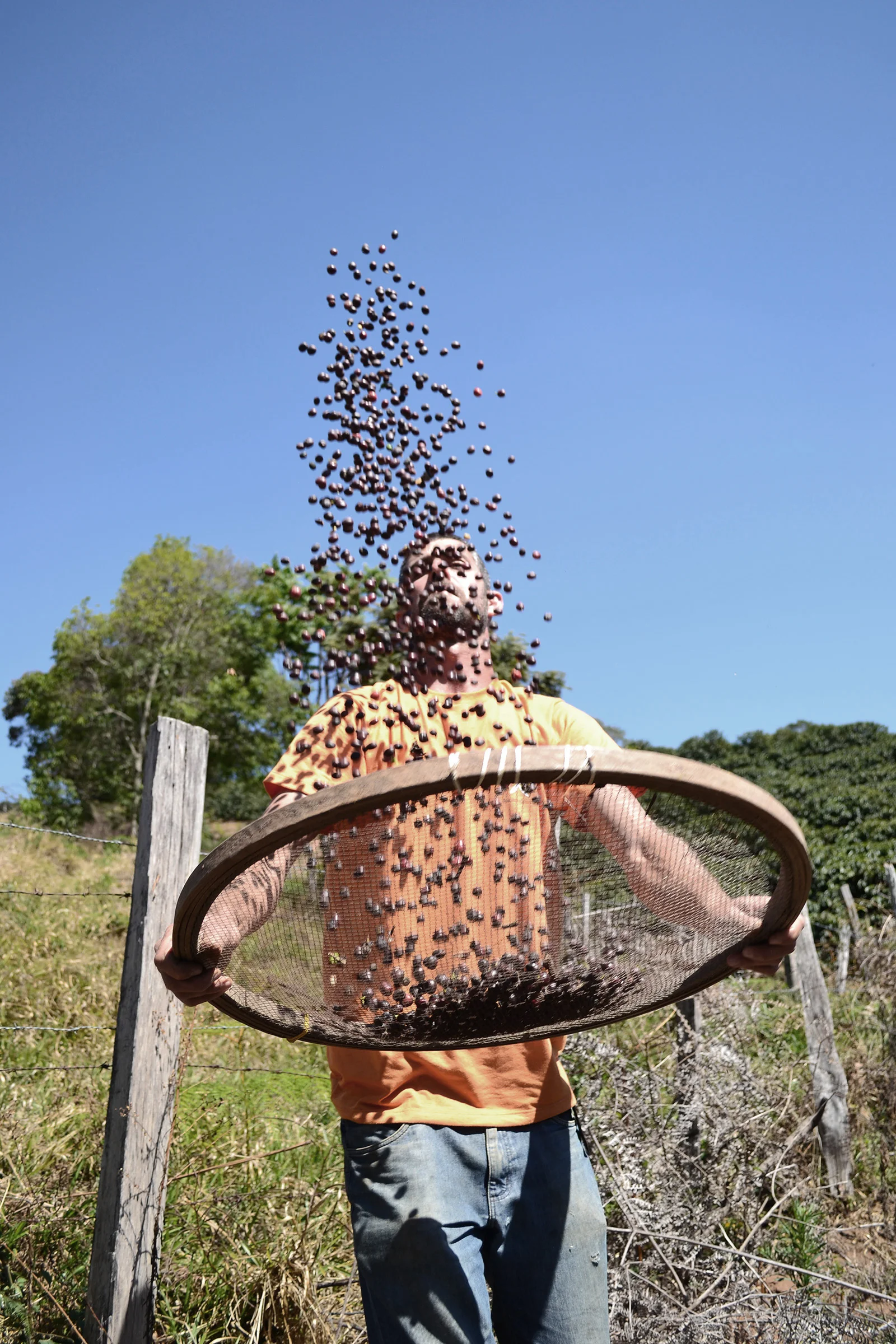The History of Coffee in Brazil
Love and Theft: Francisco de Melo Palheta
Legend has it that in 1727, Sergeant Major Francisco de Melo Palheta was dispatched to settle a land dispute between French and Dutch Guiana. He arrived in Cayenne intent on smuggling out the coveted coffee plants that were so closely guarded. He set his eyes on the Governor of Cayenne’s wife, Madame D’Orvilliers. At the closing banquet, his amorous exploits paid off, as she handed him a bouquet containing the seedling that would become the progenitor of the Brazilian coffee industry.
Though the amorous nature of the exchange is that of legend, it was documented that Palheta was sent to French Guiana by the governor of Maranhão e Grão-Pará in northeastern Brasil and Palheta later described how he was able to bring back thousands of seeds and several plants.
Throughout the 18th century coffee production increased throughout the northeast of Brasil; however, never making it past the status of being a minor local crop.
Brazil Becomes the Land of Coffee
By 1770 the first coffee plantation was established in the state of Rio de Janeiro and a small export trade to Europe soon developed. However, it was not until the 1800’s that coffee production exploded in Brazil. In 1800, 1,720 lbs. of coffee were exported. By 1820 that number had reached 12,896,000 lbs., by 1840 137,300,000 and by the end of the century Brazil was exporting over a billion lbs. of coffee annually (Ukers, 1922).
From the Baixada Fluminese region in the state of Rio de Janeiro, coffee production began expanding into the Vale do Paraíba moving south and west into Minas Gerais and into the then province of São Paulo. By the late 1800’s São Paulo was the coffee center of the Brazil as production moved from the now-depleted soils of the Vale do Paraíba westward to more fertile soils, a better climate, and flatter topography around Campinas, Rio Claro and Jundiai.
This increased production was largely fueled by slave labor, with estimates that over 5 million African slaves, over half of all African slaves brought to the New World, came to Brazil (Adams, 1925). While the institution of African slavery had existed in Brazil since the 16th century it had grown considerably in the 17th century with the expansion of sugarcane production and gold and diamond mining. It appeared that the end of slavery was near with the signing of the British-Brazilian Treaty of 1826 which set to abolish slavery in Brazil by 1830. However, since so many directly profited from the slave trade and since the government lacked enforcement capabilities, it would take over 50 years for abolition to occur. To support the agricultural and coffee boom, between 1800 and 1850 well over 2 million African slaves were sent to Brazil.
Immigration and Coffee Migration
As coffee moved westward in São Paulo growers faced both the labor needs of higher productivity, a lack of slave labor, a more expense slave market, and a growing resentment towards the institution of slavery. Although Brazil would not officially abolish slavery until 1888, it was gradually declining through measures such as the Aberdeen Act, passed in the United Kingdom of 1845, which gave the Royal Navy authority to stop and search any Brazilian vessel suspected of transporting slaves and arrest slave traders. This directly led to a high cost and low supply of slave labor. The Law of Free Birth (also known as the Rio Branco Law) of 1871 granted freedom to all newborn children of slaves and slaves belonging to the state and royal family. The slave owners of the children’s parents were to provide care for the children to the age of 21 when they would then turn them over to the state for monetary compensation. The abolition of slavery in Brazil finally came to be with the Lei Aurea, or Golden Law, on May 13, 1888. This quickly lead to a political policy of immigration to supply labor on the ever-growing coffee plantations. Brazil’s first experiment with importing foreign labor to work on the coffee fields had actually occurred 20 years prior at Fazenda Ibicada in the state of São Paulo. Between 1847 and 1857 plantation owner and senator Nicolau Vergueiro brought around 180 families, mainly Swiss-Germans, to work on his farm. However, the experiment proved a massive failure that ended in rebellion. Plantation managers were used to dealing with slaves, not citizens with rights and the expectations that go along with them. Furthermore, the contractual obligations that Vergueiro imposed on the immigrants were far from just – he not only charged them their transportation costs and the costs associated with their re-settling in Brazil, but also substantial interest on those costs. This resulted in de facto indentured servitude, a situation far different than they had been promised. Under the leadership of Swiss school teacher Thomas Davatz who had immigrated to Ibicada and was appalled by the situation he observed, the immigrant families revolted. This forced Switzerland to halt emigration to Brazil, and the Empire of Brazil to reconsider legislation regarding work conditions and the regulation of importation of foreign labor.
Overproduction
Research institutions such as the Instituto Agronomico de Campinas (IAC) increased plant vigor, disease and pest resistance, and productivity. Advances in mechanical harvesting and post-harvest technologies have led to increased productivity as well as increased coffee quality.
Specialty Coffee in Brazil
In the 1990’s a movement in Brazil began. The Brazilian Specialty Coffee Association was formed, and standards were developed in Brazil’s internal market to regulate coffee production and quality. Through competitions such as the Cup of Excellence diverse regions such as Piata, Araponga, Vale da Grama, Piraju, and Carmo de Minas have established themselves as unique micro-climates capable of producing world class coffees.







